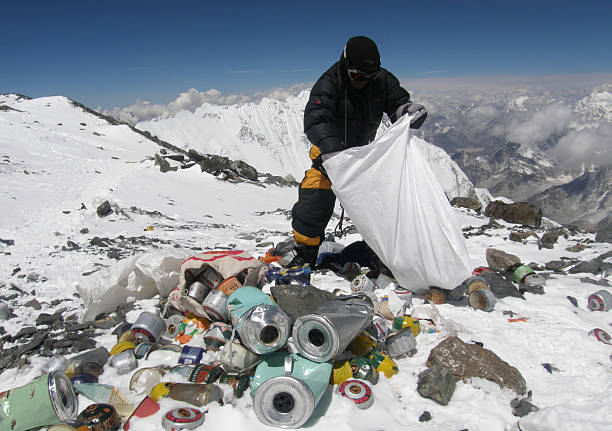On Saturday, March 2nd, the last surviving member of the first expedition to conquer Mount Everest spoke about the trash and overcrowding that has taken over Mount Everest and issued a call to action.
91-year-old Kanchha Sherpa was among the 35-member team to climb Mount Everest in May 1953. In his interview, Kanchha tells reporters, “They should not be dirtying the mountain. It is our biggest god and they should not be dirtying the gods” (AP News). Considering Sherpa is the last surviving member, many people now are drawing attention to the crisis happening at the peak of Mount Everest and are eager to help fix this issue.
To start off, overcrowding has become a big concern. In 2023, 667 climbers climbed mount everest during the Spring season. The number of climbers keeps increasing each year; and with more climbers, comes more trash and waste being left on the mountain. Kanchha also tells reporters, “It would be better for the mountain to reduce the number of climbers.”
Along with overcrowding, there have been concerns about the amount of people actually living on the mountain for extended periods of time. With people essentially living on the mountain, much waste and trash is being left and overall contributing to the problem. However, authorities have no plan to reduce the amount of climbing permits they distribute or limiting the amount of time they can spend on the mountain.
Government and non-government organizations are attempting to fix the issue at hand by launching campaigns to clean the trash on the mountain. In 2019, the Nepali government cleaned up 22,000 pounds of trash from Mount Everest. Along with campaigns, a deposit was put in place in 2014. Any climber must put down a $4,000 deposit, and the money will be refunded if the person returns with 18 pounds of garbage. In fact, 18 pounds of garbage is the average number a single climber produces on their journey. Both initiatives are ways to stop the production of garbage and stress the importance of keeping Mount Everest clean.
Along with physical trash, the climbers also have to clean up human waste. You may be wondering where the human waste goes. That’s where The Mount Everest Biogas Project steps in. They plan to build a solar powered system that turns human waste into fuel for the local communities. Their system will prevent human feces from being dumped at local villages near Mount Everest, keeping the water cleaner for the citizens to drink. Their system will also create more local jobs for the citizens.
Many consider Mount Everest a sacred place, especially the Sherpa people. Although there are some organizations put in place to improve the harmful conditions, more awareness needs to be spread to fully restore Mount Everest to its original state.
